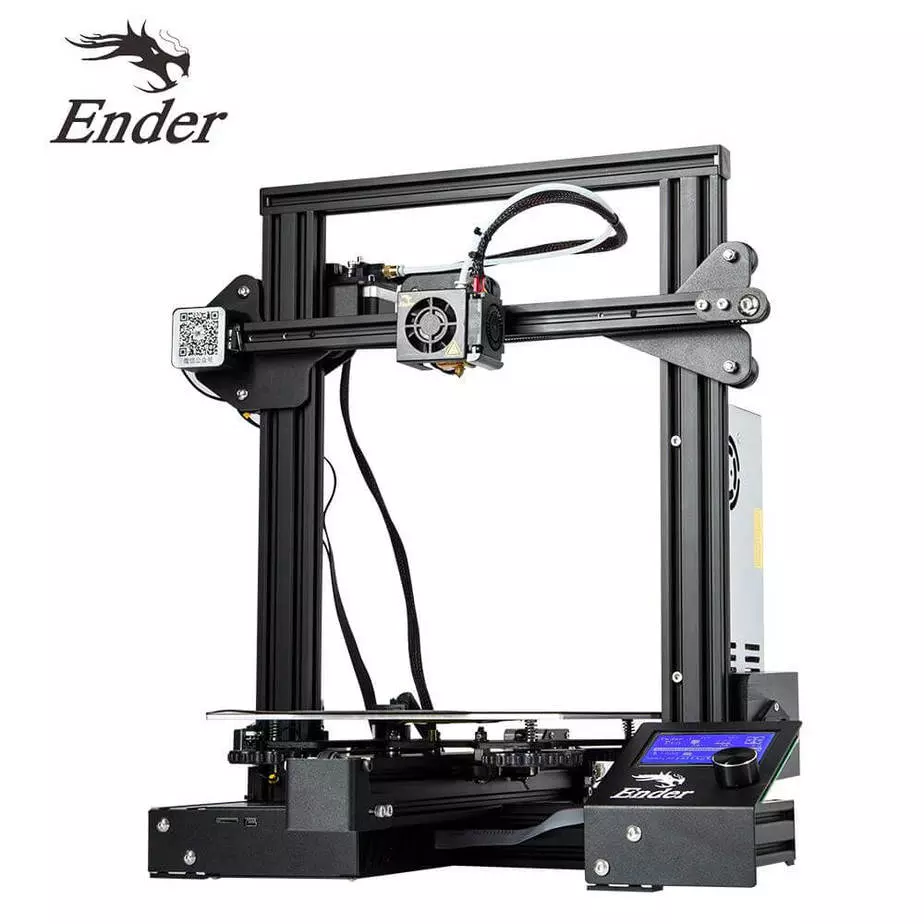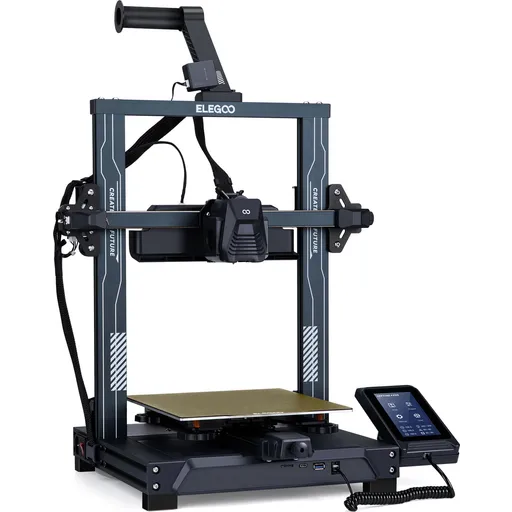Compare Ender 3 PRO vs Neptune 4 PRO
Comparison between the best 3D printers
Choose the best 3D printer at the best price. The cheapest 3D printers are here.
Buy a 3D printer here with 3D Fila.
 |
 |
|
| Model | Ender 3 PRO[BUY Ender 3 PRO] |
Neptune 4 PRO |
| Printing Material | Filament | Filament |
| Buy Filament for Creality 3D Ender 3 PRO | Buy Filament forElegoo Neptune 4 PRO | |
| Estimated price | $258,00 | $359,00 |
| Manufacturer | Creality 3D | Elegoo |
| Release Year | 2019 | 2023 |
| Print Volume [mm] | 220x220x250 | 225x225x265 |
| Printer Size [mm] | 440x440x465 | 475x445x515 |
| Weight [kg] | 6,62 | 8,9 |
| Power Loss Recovery | NO | YES |
| Enclosed printer | NO | NO |
| Bed Leveling | Manual | Automatic |
| Filament End Sensor | NO | YES |
| Bed type | Heated | Heated |
| Power supply system | Bowden | Direct Drive |
| Standard nozzle | 0,4 | 0,4 |
| Maximum Nozzle Temperature [°C] | 255 | 300 |
| Maximum Bed Temperature [°C] | 110 | 110 |
| Maximum printing speed [mm/s] | 180 | 500 |
| Filament holder | YES | YES |
| Camera for supervision | NO | NO |
| Recommended filaments | PLA, TPU, ABS, PETG | PLA, PLA+, TPU, PETG, Nylon, ABS |
| Recommended slicers | Cura, Simplify, Slic3r | Bambu Studio, Super Slicer, Cura, Prusa Slicer, Orca |
| Maximum Resolution [mm] | 0,1 | 0,1 |
| Processor | 32 bits | ARM 64 bit |
| Display | Mono | Touchscreen 4,3'' |
| Power Supply | 24V / 360W Meanwell | 310 W |
| Connectivity | SD / USB | USB, microSD |
| Operating systems | Windows, Mac, Linux | Windows, Linux, Macbook |
| Date of registration in the system | 2021-04-14 | 2024-07-02 |
| Release date | 2019 | 2023 |
| Extra features | The Ender 3 Pro stands out for its beginner-friendly assembly and easily modifiable structure. With a 350W power supply, it heats up quickly and has a simple application that offers good print quality. However, its motors and fans are noisy, and the interface seems outdated. Assembly is accessible, without the need for advanced techniques, and it has integrated belt tensioners. It includes a detailed guide and supports microSD card and USB. | The Elegoo Neptune 4 Pro stands out for its advanced features, including pre-installed Klipper firmware, a dual-gear direct extruder with a 5.2:1 ratio, a high-temperature nozzle (up to 300°C), a flexible magnetic PEI platform, efficient cooling fans, and a 121-point auto-leveling system. The printer also features a 4.3-inch touchscreen interface, dual linear bars on the X and Y axes, and a segmented heated bed for energy savings. |
| Support for multiple colors and materials (AMS and CFS) | NO | NO |
Notes * |
||
| Cost-benefit | 6 / 10 | 7 / 10 |
| Hardware | 0.5 / 10 | 3.2 / 10 |
| Tela | . | . |
| Print volume | 3 / 10 | 3 / 10 |
| Performance | 1 / 10 | 4 / 10 |
| [BUY Ender 3 PRO] |
Conclusion |
| In conclusion, both the Ender 3 PRO and the Neptune 4 PRO offer unique advantages and cater to different user needs in the 3D printing spectrum. The Ender 3 PRO, being more budget-friendly, is well-suited for beginners and hobbyists looking for a solid entry point into 3D printing. Its straightforward assembly and modifiable design make it highly accessible, despite its limitations in terms of features such as lack of power loss recovery and manual bed leveling. On the other hand, the Neptune 4 PRO, while priced higher, delivers advanced capabilities that justify its cost, particularly in settings where efficiency and higher performance are paramount. Features like automatic bed leveling, a dual-gear direct drive extruder, and a more robust touchscreen interface cater to users willing to invest in enhanced capabilities and convenience. Its larger print volume and faster maximum printing speed also suggest that it is designed for those with more demanding projects. Ultimately, the choice between the two depends on the user's budget and requirements. For entry-level users or those on a tight budget, the Ender 3 PRO remains a popular choice. In contrast, more experienced users or those needing advanced features and faster print speeds may find the investment in the Neptune 4 PRO to be well worth it. Thus, assessing individual printing needs and budget constraints will guide the decision on which printer is best suited for each user. |

